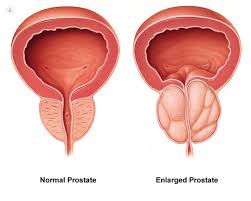Complete Guide with Onion Juice Remedy & FAQs
Prostate disease is an increasing health concern among men, particularly those aged 50 and above. This comprehensive guide outlines the causes, symptoms, and treatment options for prostate-related conditions—and introduces a natural remedy involving onion juice, believed by some to help detoxify the prostate gland.
What Is Prostate Disease?
The prostate is a small, walnut-sized gland located beneath the bladder in men. It plays a crucial role in the male reproductive system by producing seminal fluid, which nourishes and transports sperm.
The three most common types of prostate disease are:
- Prostatitis (inflammation of the prostate)
- Benign Prostatic Hyperplasia (BPH) (non-cancerous enlargement)
- Prostate Cancer
Men over 50 are at significantly increased risk. Those with a family history of prostate issues should consider early screening and regular medical checkups.
Symptoms of Prostate Disease
Symptoms may vary depending on the specific condition, but commonly include:
- Difficulty starting or stopping urination
- Frequent urge to urinate, especially at night
- Pain or burning during urination
- Weak urine stream
- Blood in urine or semen
- Pain in the lower back, pelvis, or upper thighs
- Sexual dysfunction (e.g., premature ejaculation or erectile difficulties)
Notably, early-stage prostate cancer may show no symptoms, making routine screening essential for men over 50.
Causes and Risk Factors
Causes differ depending on the type of prostate disease:
- Prostatitis may be bacterial or non-bacterial. Bacterial prostatitis responds to antibiotics, while non-bacterial forms may result from nerve damage, pelvic floor dysfunction, or chemical irritation.
- BPH is primarily linked to hormonal changes and aging.
- Prostate cancer risk factors include age, genetics, lifestyle, and diet.
Diagnosis of Prostate Disease
Healthcare providers use several diagnostic tools, including:
- Digital Rectal Exam (DRE)
- Prostate-Specific Antigen (PSA) blood test
- Ultrasound or MRI
- Urinalysis
- Biopsy (in suspected cancer cases)
Medical Treatments for Prostate Disease
While natural remedies may assist, professional medical treatment is crucial, especially in severe cases.
1. Treatment for Prostatitis
- Acute bacterial prostatitis: Intravenous antibiotics (e.g., ciprofloxacin)
- Chronic prostatitis: Oral antibiotics for 4–12 weeks
- Non-bacterial prostatitis: Alpha-blockers (e.g., tamsulosin) and anti-inflammatories
2. Treatment for BPH (Enlarged Prostate)
Medications:
- Alpha-blockers (e.g., tamsulosin) – relax prostate muscles
- 5-alpha-reductase inhibitors (e.g., finasteride) – reduce prostate size
- Combination therapy – recommended for severe BPH
Surgical Options:
- TURP (Transurethral Resection of the Prostate): Gold standard procedure
- Laser therapies (e.g., HoLEP, GreenLight): Minimal bleeding
- Rezum Water Vapor Therapy: Minimally invasive treatment
3. Treatment for Prostate Cancer
Localized Cancer:
- Active surveillance (for slow-growing tumors)
- Radical prostatectomy (surgical removal)
- Radiation therapy (IMRT, brachytherapy)
Advanced Cancer:
- Hormone therapy (androgen deprivation)
- Chemotherapy (e.g., docetaxel)
- Immunotherapy (e.g., Provenge vaccine)
Natural Remedy: Using Onion Juice to Detoxify the Prostate
Many proponents of natural medicine suggest that onion juice may help cleanse the prostate of toxins and enhance its function.
Potential Benefits of Onion Juice:
- Reduces inflammation
- Flushes out toxins
- Improves prostate function
- Enhances sexual health
Onion Juice Recipe for Prostate Health
Ingredients:
- 8 large onions or 12 medium-sized onions
Preparation and Instructions:
- Peel and wash the onions thoroughly.
- Chop them roughly (do not blend, as this dilutes the juice).
- Crush using a mortar or clean surface to extract the juice.
- Filter the juice through a clean cloth.
- Drink 33cl (about one glass) of the juice first thing in the morning on an empty stomach.
Treatment Schedule:
- First dose: Day 1
- Second dose: 3 weeks later
- Third dose: Another 3 weeks later
Recommended Frequency: Once every 10 years as a maintenance routine
Why It May Work:
- Onions contain quercetin, a powerful anti-inflammatory compound
- May help detoxify the prostate by eliminating toxins
- Improves blood circulation and may boost sexual function
Note: For optimal results, combine with a balanced diet, regular exercise, and periodic medical evaluations.
Caution:
Avoid this remedy if you suffer from low blood pressure or have a history of gastric ulcers. Always consult your doctor before trying natural treatments.
Does Onion Juice Really Work for Prostate Detox?
Scientific evidence supporting the effectiveness of onion juice in curing prostate disease is limited. However, onions are rich in antioxidants, flavonoids, and sulfur compounds—all known for their immune-boosting and anti-inflammatory properties.
While not a replacement for conventional treatment, onion juice may serve as a complementary approach to support overall prostate health.
Prevention Tips for a Healthy Prostate
- Undergo regular screening after age 50—or earlier if at higher risk
- Eat a balanced diet rich in fruits, vegetables, and omega-3 fatty acids
- Include prostate-friendly foods like tomatoes, green tea, nuts, and fish
- Exercise regularly (at least 30 minutes daily)
- Avoid smoking and excessive alcohol
- Stay physically active and address urinary symptoms early
When to See a Doctor
Seek immediate medical attention if you experience:
- Complete inability to urinate
- Severe pain accompanied by fever or chills
- Blood clots in urine
Schedule a screening if:
- You’re over 50 (or 40 with a family history)
- PSA levels exceed 4 ng/mL
- Symptoms persist for more than two weeks
Here is your corrected version with improved grammar, clarity, and consistent formatting, while preserving the professional and informative tone:
Frequently Asked Questions (FAQs) About Prostate Disease
1. What are the first signs of prostate problems?
Early symptoms often include:
- Frequent urination, especially at night
- Weak or interrupted urine stream
- Difficulty starting or stopping urination
- Urgent need to urinate
- Feeling of incomplete bladder emptying
2. At what age should men start prostate screening?
- Age 40: If there is a family history of prostate cancer
- Age 45: For high-risk groups (e.g., African-American men, those with genetic mutations)
- Age 50+: For average-risk men
3. Can an enlarged prostate be fatal?
Benign Prostatic Hyperplasia (BPH) is not fatal, but complications can be serious:
- Acute urinary retention (a medical emergency)
- Kidney damage due to prolonged retention
- Increased risk of urinary tract infections
Prostate cancer, however, can be life-threatening if not diagnosed and treated early.
4. How can I check my prostate at home?
While no home method replaces a professional medical exam, watch for:
✔ Changes in urination patterns
✔ Unexplained pelvic or lower back pain
✔ Blood in urine or semen
For accurate screening, undergo a PSA blood test and a digital rectal exam (DRE) by a healthcare provider.
5. Does frequent ejaculation help the prostate?
Studies suggest:
- 2–4 ejaculations per week may reduce the risk of prostate cancer
- Helps flush out toxins from the prostate
- Prevents fluid stagnation, which may lead to inflammation
6. What foods harm prostate health?
Avoid or limit:
❌ Processed meats (e.g., bacon, sausages)
❌ High-fat dairy products (excess calcium may raise cancer risk)
❌ Spicy foods (can irritate the urinary tract)
❌ Alcohol and caffeine (can worsen urinary symptoms)
7. Is onion juice effective for prostate health?
Some research suggests benefits, including:
- Quercetin: A flavonoid that reduces inflammation (NIH-backed studies)
- Antioxidants: Help protect prostate cells from damage
- Sulfur compounds: Support natural detoxification
For optimal effects, consume fresh raw onion juice as described in the remedy section—not cooked or processed.
8. How often should I get my prostate checked?
- Ages 40–54: Every 2–4 years if at higher risk
- Ages 55–69: Annually, as recommended by most urologists
- Age 70+: Screening should be based on individual health and doctor’s advice
9. Can prostate problems cause erectile dysfunction?
Yes. Erectile dysfunction can result from:
- Nerve damage due to prostate surgery or treatment
- Reduced blood flow caused by chronic inflammation
- Psychological stress linked to ongoing urinary symptoms
10. What is the survival rate for prostate cancer?
When detected early:
- 5-year survival rate: ~99%
- 10-year survival rate: ~98%
In advanced cases (where cancer has spread): - 5-year survival rate drops to ~30%
Final Thoughts
Prostate disease is a serious but manageable condition when diagnosed early. While conventional medicine remains the cornerstone of treatment, some natural remedies—such as onion juice—may offer additional support. Nonetheless, no natural approach should replace professional medical advice or treatment.
If you notice symptoms or have a family history of prostate issues, consult your doctor promptly.
Early detection saves lives. Share this information to raise awareness among men over 40.













